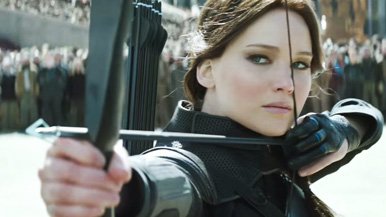|
|
Book vs. Movie - The Hunger Games: Mockingjay Part 2By Ben GruchowNovember 28, 2016
Collins teases the reader pretty effectively with this, drawing the post-Peeta, pre-invasion stretch of the book out with precision. A chunk of the book’s third quarter is given over to Katniss transforming from an undernourished trauma victim to something approximating an adjusted soldier, with Johanna as her companion in both states of physical and mental shape (although the actual passage is done well, the moment where Collins begins structuring the shape of the book’s final act, involving a spur-of-the-moment decision by Coin, positively creaks with wheezy plot mechanics; a follow-up sequence involving a convenient medical procedure to accelerate healing is even more so. Prior to all this, though, we have what might be the sharpest passage in the final novel, one that acts as a primary moment of reckoning for Katniss’s character arc in the series up to this point. It occurs as the rebels secure District 2, a mountainous region containing most of the Capitol’s defense and weapons arsenal. The workers inside the primary mountain caves are smoked out in destructive fashion, and the moment in question involves a lone, injured miner with a gun. Collins has to this point been building toward the climax of a secondary narrative, that of the districts being led to see each other as enemies. This is, of course, the product of Snow’s incitement to inter-district violence from Catching Fire. This climax arrives when the gun in question is pointed at Katniss, and the sentiment here echoes Peeta’s from the first installment of the series: if you’re going to die, do it in a way that is your own. Of course, the tone behind the sentiment then was one of uneasiness and tension. Here, we have the opposite; this sequence, set at night in a bombed-out ruin and populated by victims of war, exudes not much beyond exhaustion and a kind of get-it-over-with mentality.
|

|
|
|

|
Friday, November 1, 2024
© 2024 Box Office Prophets, a division of One Of Us, Inc.


